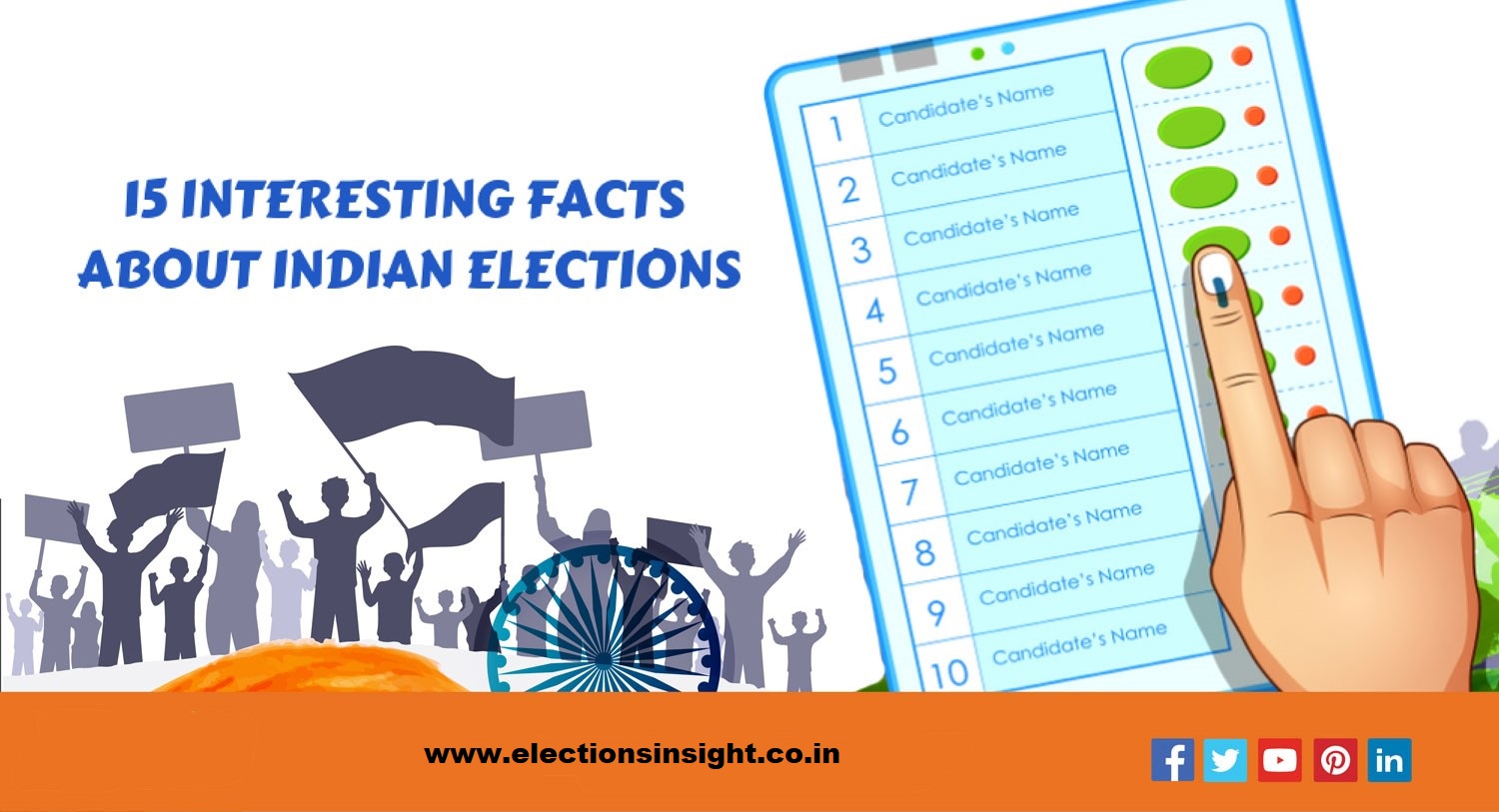
Indian democracy has many twists and turns especially with its citizens taking a keen interest in the Indian political process. The 2019 elections are going to be a watershed moment in Indian politics not because it is just like any other election which takes place in India, but because the stakes are so high and the dynamics of the game have changed completely.
There are many people who are not aware of politics and need to be informed about the various processes which exist in our country. Not just the 2019 elections, but every election matters and people need to be aware of public life and the issues prevalent in our country.
Here are 15 interesting facts about Indian elections that you didn’t know-
- Indian democracy has come a long way since independence. Voting trends have been different every decade and the same is of the case with Indian elections since 1952. Since 1952, we witnessed a phase of a pro-incumbency mandate in almost all elections. In the first 25 years of voting people actually trusted their leaders. The feeling of nationalism and pride in their leaders was clearly evident. But things changed later and leaders failed to deliver on many fronts. There were a lot of issues with most governments and people slowly realized this. By 1977, things changed dramatically and there was a phase of an anti-incumbency wave in most states. This trend also changed things, and many leaders started to deliver well. Today, we can say that the Indian voter is smart because those leaders who don’t deliver fear the risk of losing an election because voters do have a mind of their own. Another factor to keep in mind is the alliances between parties in Indian elections apart from just voting trends.
- The reason why 2019 elections are gaining so much traction is that unlike before the liberalization phase, election and voting patterns have changed drastically. This is visible every five years when a new government is formed. The 2004 and the 2014 general elections cannot be compared with each other as the political landscape and dynamics were totally different. The same can be said of the 2019 elections. Whether one wants to call it a presidential format or style between leaders, the 2019 electoral discourse is all the more polarized and debatable on many fronts. This makes it all the more difficult to predict trends as every state has learned voters to turn the tables around. The factor of regional parties and the post-poll scenario is also playing an important tone this election season.
- Atal Bihari Vajpayee was the only Indian Parliamentarian who was elected from these four states- Uttar Pradesh, Gujarat, Madhya Pradesh, Delhi. He is also known as the only politician who won from these six different constituencies- Balrampur, New Delhi, Vidisha, Gandhinagar, Gwalior and Lucknow.
- The Indian Election Commission has also allowed transgenders to enroll in electoral polls. It happened in the 2014 elections. In 2019 elections, over 1 million Indians and over 30,000 transgenders will vote for the Prime Minister of this country.
- After a very long time in Indian elections, the candidates contesting have to advertise in newspapers and television, about any criminal records from their past. Earlier candidates had to give an affidavit to the poll panel but now it has become a mandate to make it public for better transparency and accountability.
- In the 2019 elections, the EVM’s and ballot papers would carry the photographs of all candidates along with their party names and symbols. This decision was taken by the Election Commission to help voters identify their political leaders.
- In the present elections, for the very first time, the (VVPAT) Voter Verifiable Paper Audit Trail was used in the EVM’s across the country. This process helps voters to identify their votes being cast.
- In the 2019 elections, over 83 million people have joined the electoral process to cast their votes for the very first time.
- This year there is a new Social media Model Code of Conduct. All political parties will have to disclose their social media channels or handles to the Election Commission. The use of abusive language and fake news on social media is also under the purview of the law.
- Dr K. Padmarajan of Salem in Tamil Nadu is the most unsuccessful candidate in India who has lost over 170 elections that he contested.
- The very first Lok Sabha election was fought between fifty-three political parties in India.
- The 61st Constitutional Amendment has reduced the voting age from 21 to 18 in 1989.
- There was the highest representation of women in the 16th Lok Sabha elections with over 60 women being represented.
- About 42 independent members were elected to the lower house in the year 1957.
- The 2019 elections would be the longest elections in our country with regards to the number of days the polling is to be held.
No Comments